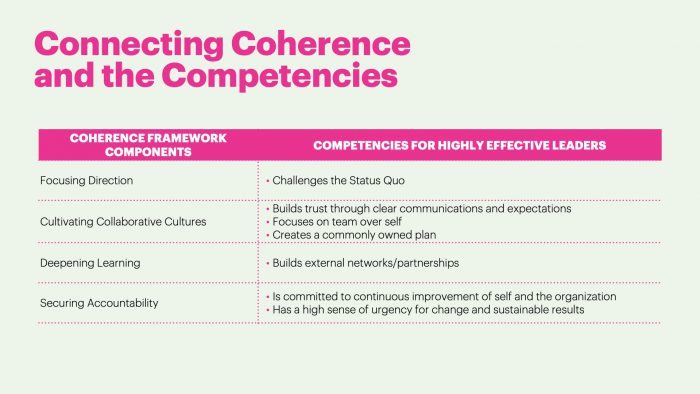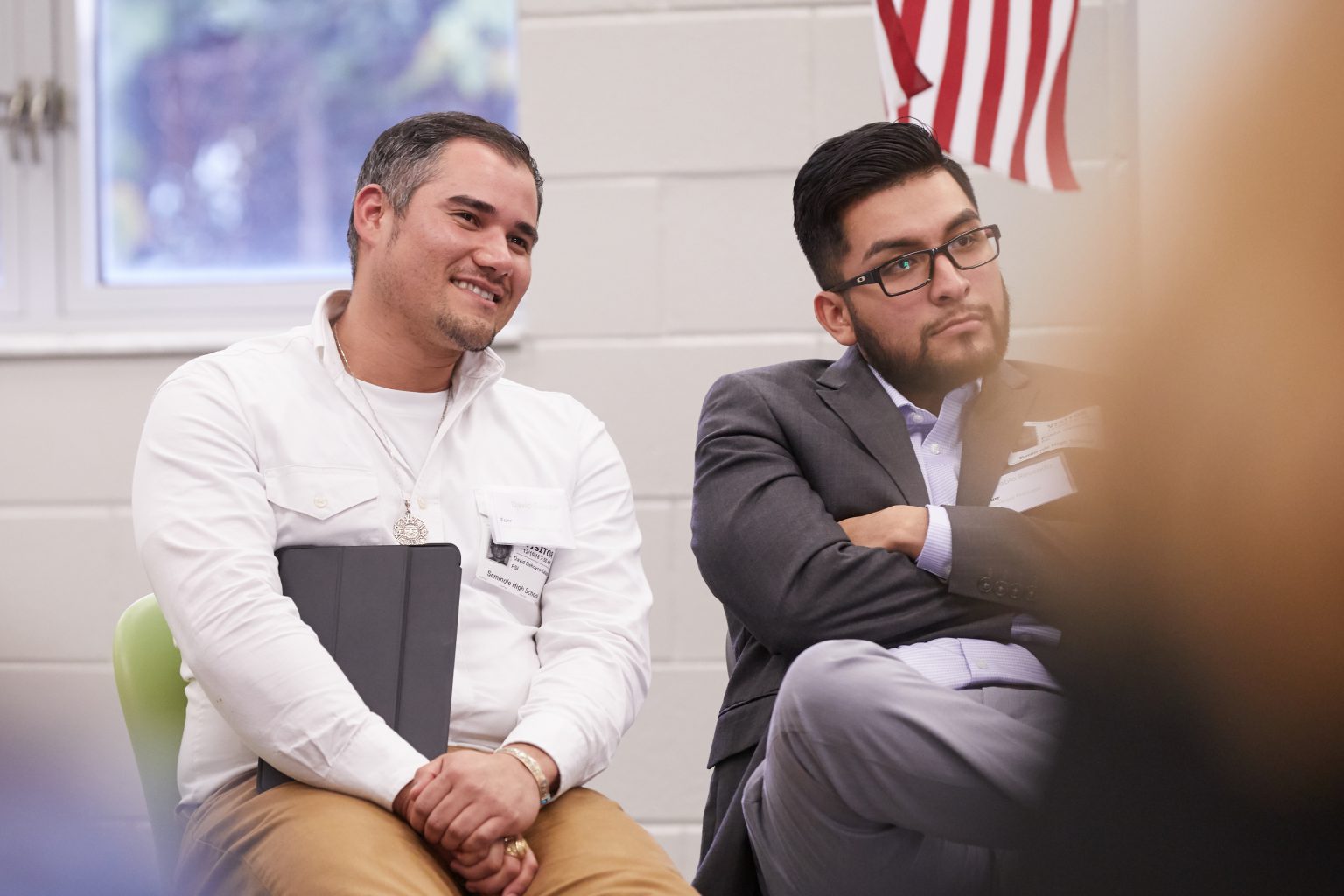We hear it often enough—strong, consistent leadership is necessary to the success of any organization. Of course, this holds true for schools as well—and at the heart of leadership is the role of the leader in establishing a strong mission and culture.
At XQ, we care so much about strong mission and culture that we identify it as a core design principle. Specifically, we define strong mission and culture as “a unifying set of values and principles that provide common purpose, express belief in the potential of every student, and define every aspect of a school.”
While each XQ school manifests each of the design principles in its own way, we consider each principle fundamental to every school and at the heart of what is required to build schools that reflect a commitment to equity and innovation.
XQ recently hosted an author-led webinar based upon the recently released book, Coherent Leadership: Forging Clarity from Complexity. The authors who graciously led the webinar are Michael Fullan and Lyle Kirtman, leaders in education reform and leadership. Fullan is a prolific, award-winning author of more than 40 books, recipient of the Order of Canada (OC) distinction, and relentless advocate for the moral purpose of education. Kirtman has been a leadership development consultant for more than 30 years in education (K-12 and higher ed), health care, non-profit, and corporate environments.
The webinar underscored the need not only for strong leaders who have mastered specific competencies, but also for coherent leadership, which is no doubt a more proactive—and less reactive—form of leadership.
Coherent leadership is the key to a strong school culture
At its core, rethinking anything—including rethinking high school—is complex and dynamic work that requires unity of purpose, which is at the heart of the concept of coherence.
School leaders at our XQ schools recognize the importance of coherence, as well as how challenging it is to sustain. For example, at Grand Rapids Public Museum High School, the team has made a concerted effort to keep mission and culture at the forefront. As the school has grown and new staff, students, and community members have come on board, the leadership team remains intentional about maintaining their commitment to their core values.
Research confirms this importance. Fullan offers the following four components as part of his “Coherence Framework for Leadership:”
- Focusing Direction. Leadership ensures an organization (and its people!) are purpose-driven, goal-oriented, and focused on strategy. This is at the core of a strong mission.
- Cultivating Collaborative Cultures. This involves creating a culture of growth and of learning and focusing on collaborative work. Fullan implores leaders to be “lead learners,” since effective leaders are those who participate as learners with others. One way XQ facilitates this is through our Community of Practice.
- Deepening Learning. This is a constant process that includes clarifying goals, being precise about pedagogy, and iterating practices through capacity building.
- Securing Accountability. Coherence includes both internal and external accountability.
While it might be easy to think of them in isolation, these components are most effective when working in tandem. For example, you cannot get focused direction without collaboration. Fullan urges leaders to “think of focusing direction in a collaborative way as the point of departure, as a moral imperative, as a way of addressing inequity.” He explains, “Focusing direction in this way allows us to really get into deeper goals other than just literacy and numeracy—and to extend to fundamental goals for the future of all learners.”
Mastering leadership competencies to activate a coherent framework
The dynamic process of leading for coherence requires the development and application of certain competencies. (See the XQ Learner Goals for inspiration.) When a leader is seeking to focus direction to a new way of thinking, it requires flexing muscles that productively “challenge the status quo” in a manner that helps advance a vision for innovation and equity.
Kirtman outlined how these specific competencies for highly effective leaders are critical to enacting each of the components of the coherence framework in a dynamic environment:

A competency that surfaces across our XQ schools is that of “building external networks and partnerships,” one of the XQ Design Principles we’ll feature later this spring).
Each of these are critical. Crosstown High School leaders understand the importance of engaging all parties for coherence, recognizing that opening oneself up to the vulnerabilities of open dialogue can lead to coherence that sticks.
Final thoughts on building a strong school culture
Anyone who has worked as part of a team understands that working toward coherence takes time and a combination of execution, implementation, and management.
A few ways XQ schools have improved school culture:
- Building a strong office team
- Seeing the leadership team as a resource for the entire school community
- Distributing and developing teacher leadership
- Establishing a genuinely collaborative culture
- Managing parental concerns
- Integrating school boards as part of leadership work
As a former school leader myself—and member of a founding team for a brand-new high school—I viscerally remember how dynamic and complex the process of establishing a mission and culture was. While it could be written on paper, to live it was a whole different thing. Even the process of rethinking school traditions that would serve the type of culture we wanted to create was a complex process. It was important to our team to represent diverse voices in the process and to not be afraid to disagree and face the process head-on.
In the end, alignment (perhaps the “old way of doing business”) is rational. Coherence is emotional and requires day-to-day trust building, learning, and engagement with a team.
Add your school to our series on high school redesign
Sharing lessons from the XQ schools is a goal we take seriously. Over the next few months, we’ll delve deeper into each of the six XQ School Design Principles. Look for special issues of our Give Me Five newsletter on each principle and blogs from XQ and guest contributors that drill down on examples. We’d love to hear how your school is putting these principles to work. Fill out our guest contributor form if you’re interested in sharing your examples.
TAGS:








